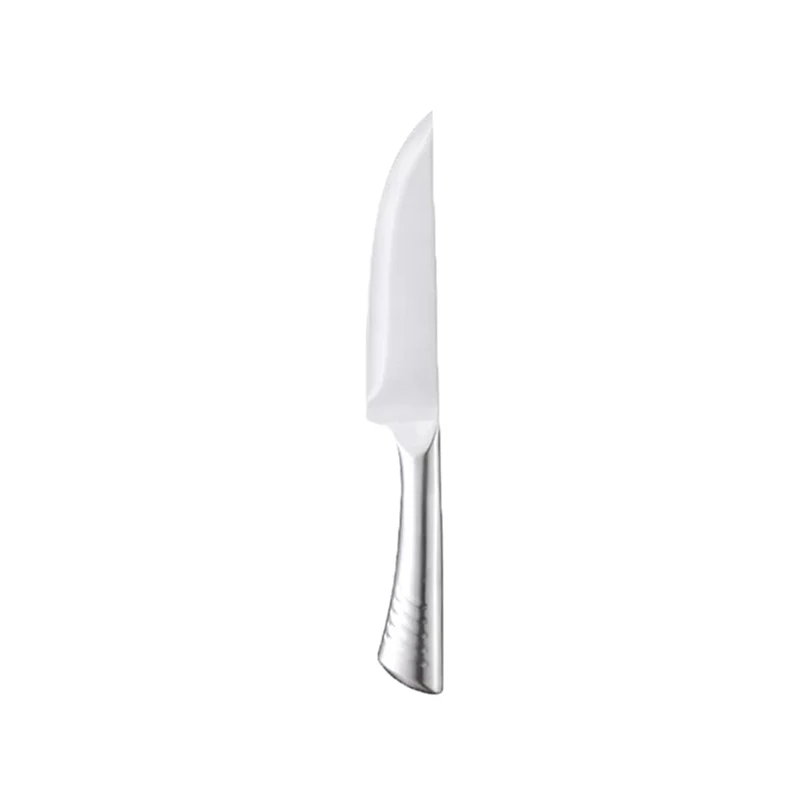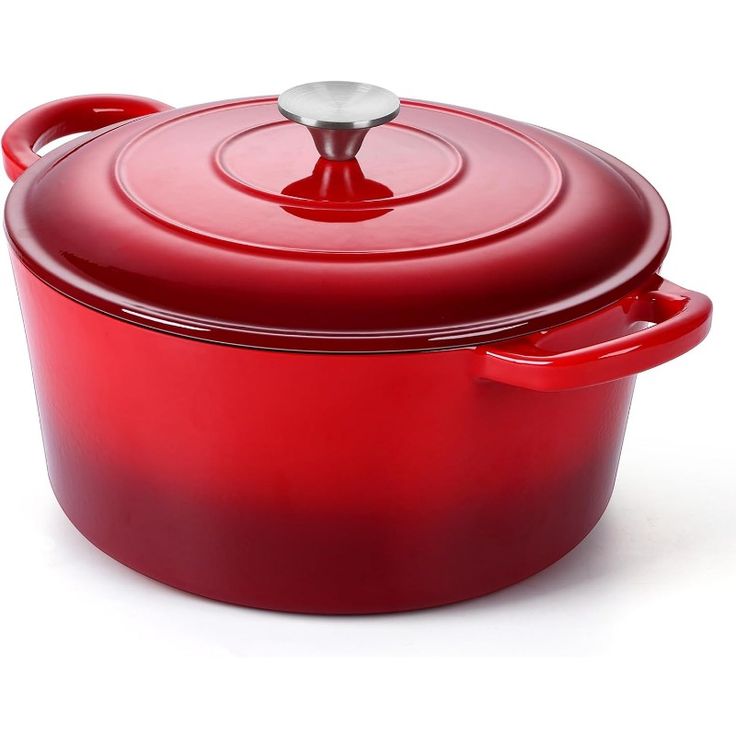What is a Kitchen Utility Knife?
A kitchen utility knife is a multi-purpose tool essential for various tasks. Unlike specialized knives that excel in particular cutting jobs, the utility knife offers a balance between the larger chef’s knife and the smaller paring knife. Its average blade length, ranging from 13 to 15 cm, makes it suitable for intermediate-sized tasks.
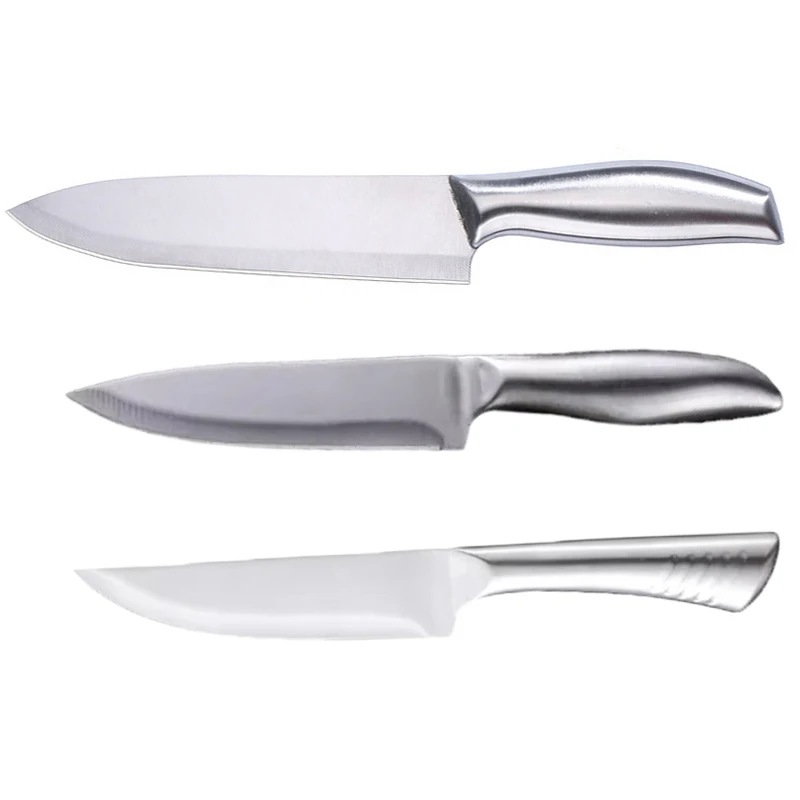
The utility knife is recognized for its pointed and slim blade, which differs from the broad and rounded tips found on other knives. Whether you need to chop vegetables, slice fruits, or cut meat and fish, this knife stands ready to handle the job. Its size and shape allow for precision in cutting smaller items, yet it is sufficiently long to tackle larger ingredients.
A kitchen utility knife is a valuable addition to any kitchen due to its adaptability. It is fit for everyone, from seasoned chefs to beginners in the culinary world. Whether as a complementary tool alongside heavier knives or as a more manageable alternative for those preferring a lighter blade, the utility knife serves its purpose with versatility and ease. Stay tuned as we delve deeper into the specifics of size, shape, and uses of this indispensable kitchen instrument.
The Ideal Size of a Kitchen Utility Knife
The perfect kitchen utility knife bridges the gap between a chef’s knife and a paring knife in size. It’s the Goldilocks of kitchen knives – not too large, not too small. With an average blade size of 13 to 15 cm (or about 5 to 6 inches), it’s just right for a host of culinary tasks.
Chefs and home cooks admire the utility knife for its uncomplicated nature. This knife size is ideal for when a chef’s knife feels too cumbersome, and a paring knife is too petite. When dicing onions, slicing mushrooms, or mincing garlic, the utility knife proves to be a manageable and efficient choice.
Many brands offer utility knives with varying blade lengths. Some may be slightly shorter or longer than the average, but they all serve a similar purpose. The utility knife should comfortably handle food items that are close in size to its blade length. It’s designed to be a go-to tool for items smaller than a melon but larger than a cherry tomato.
While size matters, it’s a flexible rule. Some utility knives might verge into paring or chef’s knife territory. But generally, they all maintain that middle ground, fulfilling an all-purpose role in your knife collection. It’s key for any kitchen knife set, accommodating a range of cutting tasks with precision and ease. Choose a utility knife that feels right in your hand and matches the majority of your cutting needs.
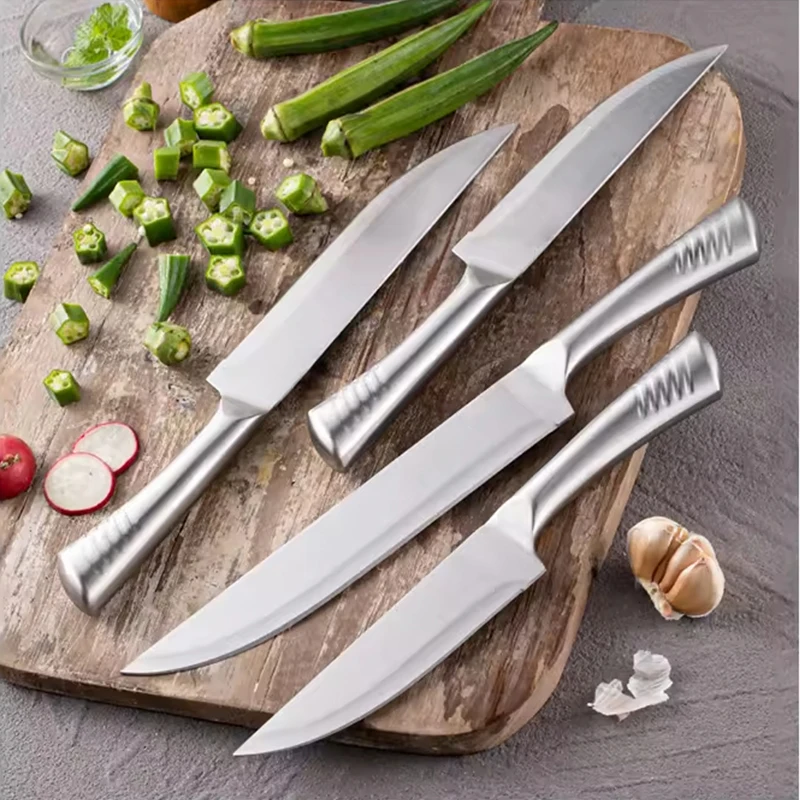
Blade Shape and Design Features
The blade shape of a kitchen utility knife is distinct and practical. It typically features a pointed tip with a straight or slightly curved edge. This shape allows for detail work, much like an artist’s brush in the kitchen. Its slim profile supports precise cuts, which is critical when dealing with intricate tasks.
A utility knife’s blade often stands out for its versatility. Some come with a serrated edge, ideal for slicing through soft bread or tomatoes without squishing them. Others have a straight edge that’s perfect for more controlled slicing of fruits and vegetables.
When it comes to design features, many utility knives include an ergonomic handle. This ensures comfort during extended use and improves control for safer cutting. A well-balanced knife, with a handle that fits snugly in your palm, reduces hand fatigue and increases efficiency.
The materials used in the blade and handle also play a role in the utility knife’s design. High-carbon stainless steel is a popular choice as it retains sharpness well and resists corrosion. Handles may be crafted from a variety of materials, including wood, plastic, or composite, providing durability and aesthetic appeal.
In summary, the blade shape and design features contribute to the utility knife’s role as a kitchen essential. A well-designed utility knife equals a comfortable, safe, and precise cutting experience. It’s no wonder that both professional chefs and home cooking enthusiasts value this tool as a cornerstone of their culinary arsenal.
Versatile Uses of a Kitchen Utility Knife
A kitchen utility knife is not just another knife in the drawer. It’s a true kitchen workhorse, versatile enough to perform a multitude of tasks. Here are some of the primary uses of this indispensable tool:
- Vegetable Prep: Whether chopping carrots, dicing onions, or slicing bell peppers, the utility knife’s size is ideal for these common prep jobs.
- Fruit Tasks: Peeling an apple, cutting a peach into slices, or halving a kiwi, it does these jobs with ease.
- Herb Chopping: Fine herbs need a gentle touch and the utility knife’s sharp blade is perfect for this delicate work.
- Meat Slicing: Need to carve chicken breasts or slice a pork loin? The utility knife can handle it with precision.
- Bread Slicing: For softer breads that require a sawing action, a serrated utility knife slices without crushing.
- Cheese Cutting: Semi-hard cheeses are no match for its sharp edge, making for clean and swift cuts.
- Sandwich Making: From cutting the bread to slicing the tomato and meats, it’s got all the steps covered.
The kitchen utility knife also shines in scenarios that require a lighter touch or when space is tight—think carving artful garnishes or working on a crowded cutting board.
Remember to choose a utility knife according to the tasks you perform most often. For an effortless cooking experience, make sure this versatile tool is readily at hand in your kitchen.
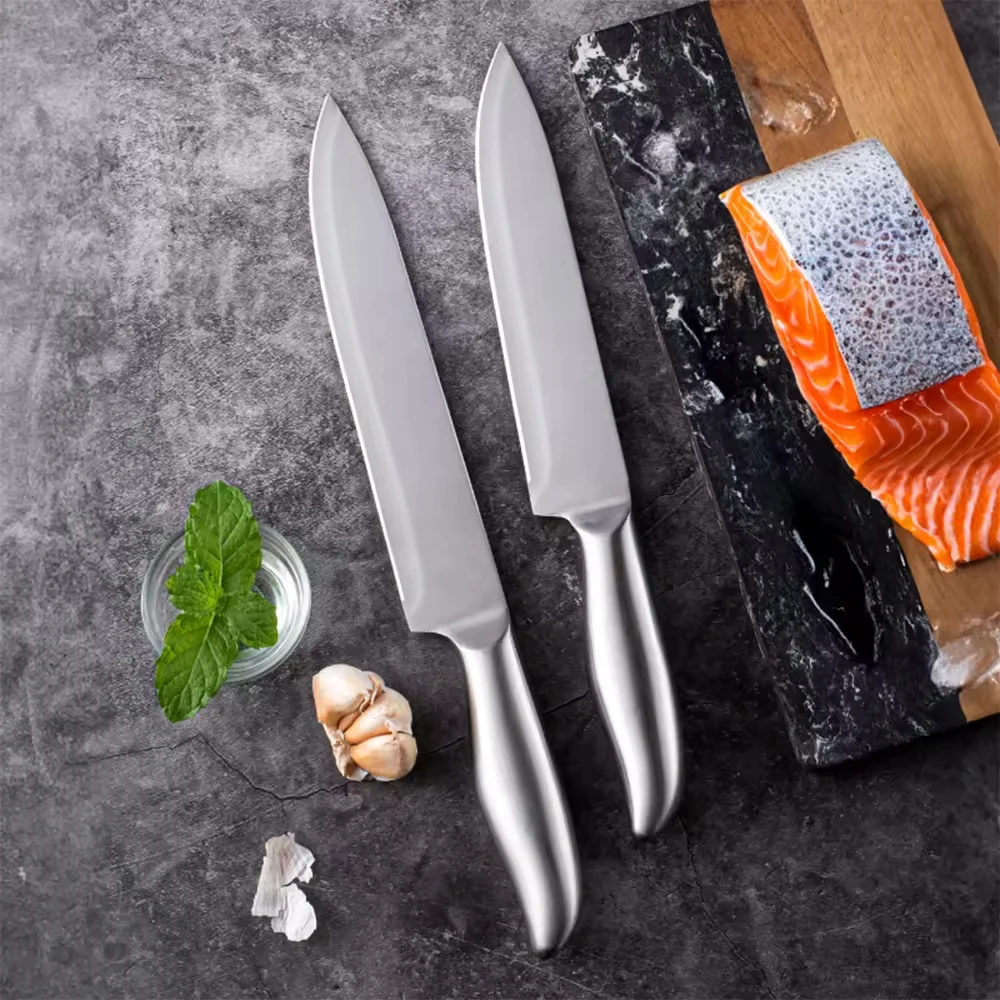
Utility Knife vs. Other Types of Kitchen Knives
When comparing a kitchen utility knife to other types, it stands out for its mid-size and versatility. Unlike other knives, which may be designed for specific tasks, the utility knife is an all-in-one solution. Here’s a brief comparison with other common kitchen knives:
- Chef’s Knife: Larger and heavier, ideal for chopping and slicing large ingredients. A utility knife is more nimble.
- Paring Knife: Smaller and perfect for peeling or intricate work. The utility knife can do this and more.
- Bread Knife: Has a serrated edge for slicing bread. Some utility knives have serrations, making them a versatile alternative.
- Carving Knife: Long and thin, designed to slice meat cleanly. For smaller meats, a utility knife can suffice.
- Filleting Knife: Flexible and sharp for removing fish bones. The utility knife can cut fish but isn’t as specialized.
- Santoku Knife: Japanese style, good for slicing, dicing, and chopping. The utility knife shares these abilities but is smaller.
In essence, the kitchen utility knife is the jack-of-all-trades in the kitchen setting. It may not outperform specialized knives in their niche, but it offers flexibility and adequacy for most kitchen tasks. For everyday cooking, it’s often the knife that most reach for first.
Selecting the Right Utility Knife for Your Cutting Tasks
When selecting a kitchen utility knife, consider your most common tasks. Look for a knife that will aid you in those specific jobs. Here are some factors to keep in mind as you make your choice:
- Length: Ensure the blade is neither too long nor too short for routine tasks. The average 13 to 15 cm blade suits most needs.
- Blade Type: Decide between serrated or straight edges based on what you cut often. Serrated is good for soft bread and tomatoes. A straight edge excels at slicing fruits and veggies.
- Handle Comfort: Choose a handle that feels comfortable and offers a firm grip. This is crucial for control and safety when cutting.
- Balance and Weight: The knife should feel balanced in your hand. A well-weighted knife aids in precision and reduces effort.
- Material Quality: Opt for high-carbon stainless steel for durability and edge retention. Your knife should resist corrosion over time.
Take your time testing different knives. Hold them, mimic cutting motions, and find the one that feels like an extension of your hand. An ideal utility knife blends with your cooking style, improving your kitchen experience. Remember, the best knife is the one that you will use most frequently and comfortably. Add such a knife to your kitchen, and it will soon become indispensable in meal prep.
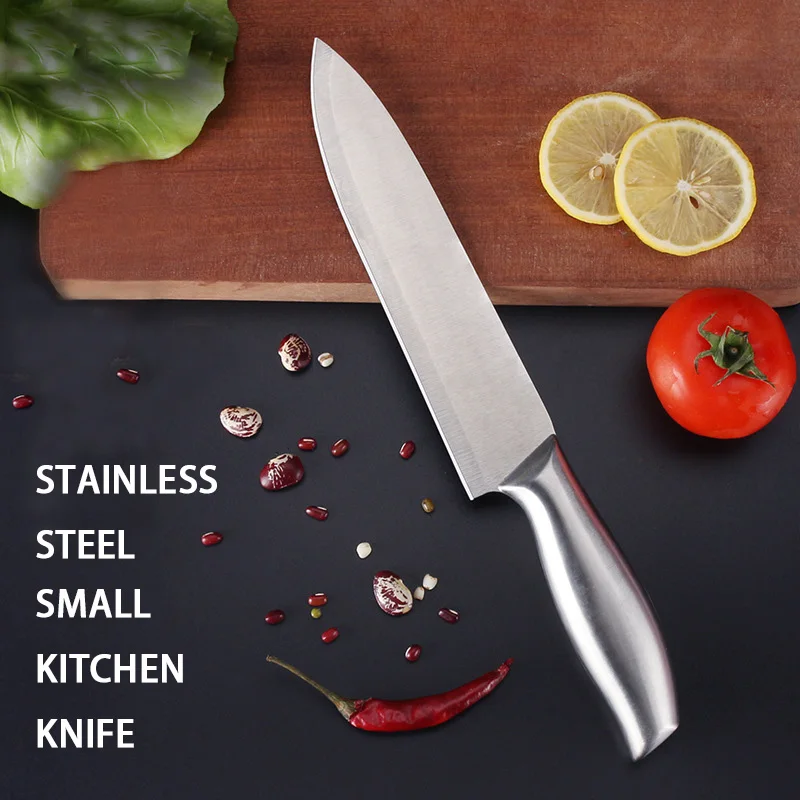
Care and Maintenance Tips for Utility Knives
Taking care of a kitchen utility knife is key to ensuring its longevity and performance. Here are simple tips to maintain your knife:
- Keep it Sharp: A dull knife is more dangerous than a sharp one. It requires more force to cut, increasing the risk of slipping. Sharpen your utility knife regularly to maintain its edge.
- Clean After Use: Rinse your knife with warm water and mild detergent after each use. Dry it immediately to avoid rust or stains.
- Use Proper Cutting Surfaces: Hard surfaces like glass or stone can dull your knife. Always use a wood or plastic cutting board.
- Store Safely: Keep your utility knife in a knife block, on a magnetic strip, or in a sheath. Proper storage prevents blade damage and keeps it out of harm’s way.
- Avoid Dishwasher: The high temperatures and harsh detergents in a dishwasher can damage the knife. Hand wash it to maintain its quality.
- Oil the Handle: If your knife has a wooden handle, oil it periodically to prevent cracking and drying.
- Check for Looseness: Regularly check the handle and blade for any signs of looseness. Tighten any screws or fastenings as needed.
- Respect its Use: Only use your utility knife for its intended purposes. Avoid using it as a screwdriver or can opener to protect the blade.
Regular maintenance will help your kitchen utility knife stay in top condition. It will make your cutting tasks easier and safer, keeping your knife like new for years to come.
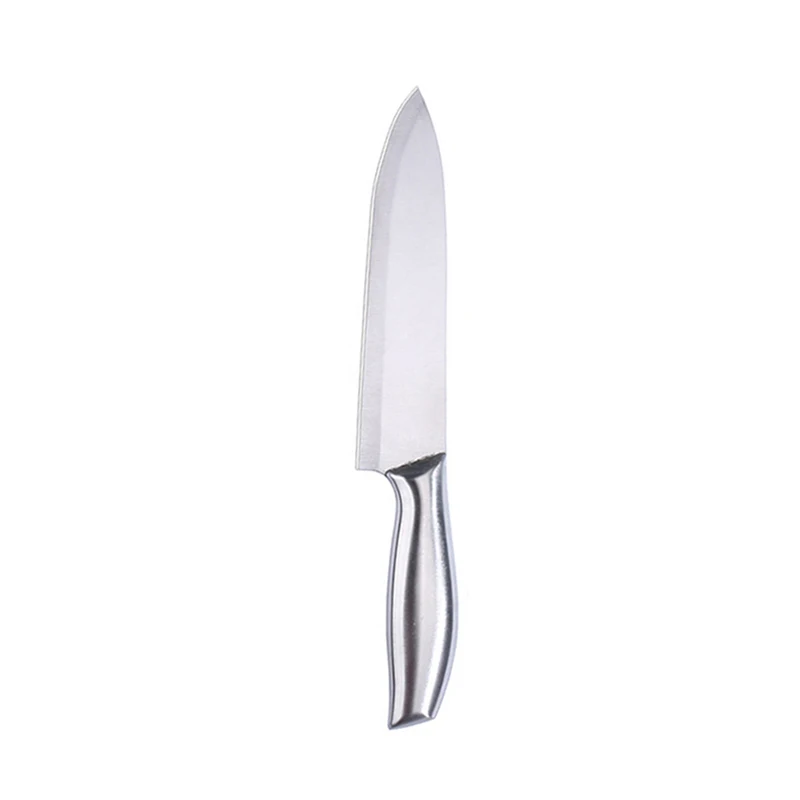
Best Practices for Using a Utility Knife in Your Kitchen
When using a kitchen utility knife, proper technique is key. Here are best practices to ensure safety and effectiveness:
- Grip the Handle Firmly: Hold the knife by the handle, not the blade. Use a firm grip for control.
- Use a Cutting Board: Always cut on a board. It protects both the knife and your countertops.
- Cut Away from Yourself: Move the knife away from your body. This prevents accidents if the knife slips.
- Keep Fingers Tucked: Position your fingers away from the blade. Use a claw grip to hold the food.
- Don’t Rush: Take your time while cutting. Hasty movements can lead to mistakes and injuries.
- Slice, Don’t Push: Move the knife in a slicing motion, not pushing down. This cuts more effectively.
- Maintain the Edge: Use a honing rod or sharpener to keep the blade sharp. A sharp knife is a safer knife.
- Clean with Care: Wash the knife by hand right after use. Dry it immediately to prevent rust.
- Store Properly: Put the knife in a block, on a magnetic strip, or in a sheath when not in use.
By following these practices, your kitchen utility knife will be a safe, efficient tool for daily use. Good habits contribute to longevity and performance, making your culinary tasks enjoyable and successful.
